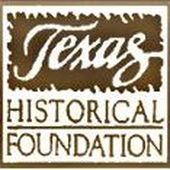Cradle of Texas Road Song
The Cradle of Texas Road
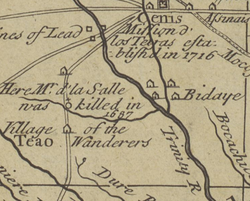
We begin on highway 90 at Madisonville. Near here at Midway is a marker to the now extinct Spanish community of Santisima Salcedo de Trinidad where, during the months of September and October of 1812, the “Republican Army of the North” initially declared the First Republic of Texas. This was preliminary to the formal declaration and constitution of the Green Flag Republic in San Antonio in April 1813. Of fundamental significance is the multicultural nature of the Republican Army, which had its genesis in Miguel Hidalgo’s launching of the Mexican Revolution against Spain on September 16, 1810. Before Hidalgo, later named the “Father of Mexico”, was betrayed and executed, he commissioned Don Bernardo Gutiérrez de Lara as a Lt. Col. and sent him to the United States seeking aid. Don Bernardo did just that, returning with US citizens and Native Americans to join with Mexicans to make the first declaration of a free Texas at Trinidad, as noted at Madisonville, first stop on the Cradle of Texas Road.
Funded in Part by:
Madisonville

Madisonville marks the beginning of the Cradle of Texas Road. "Remember the Alamo!" the battle cry at San Jacinto, 1821: this came from a citizen of later Madisonville. Ever has Madisonville been the home of innovations: among them the proverbial "cattle trough", the bane of tenderfoot cattlemen. In Madisonville, excitement prevails, permeating the length and breadth of the Cradle of Texas Road.
Bedias

From Madisonville south on highway 90, we come to Bedias, so-called for the Native American Tribe of that name, also referred to as the Bidai. The Bedias claimed to be the original tribe of Texas and the leaders of the whole area. Allied to the Caddo, they were the builders of the great Caddo Mounds of East Texas. There were a tribe of diplomats, maneuvering between various warring factions of Texas history, both among the Native Americans, themselves, and the French, Spanish and Anglo-Americans. The Bedias roamed over the whole span included within the Cradle of Texas Road.
Roans Prairie & Anderson
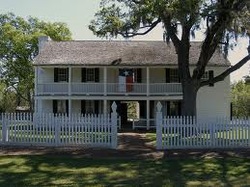
At the juncture of highway 90 and thirty we come to Roans Prairie. Here is the home of Joshua Hadley, the Alcalde of the Mexican Municipality of Washington which stretched over all or part of nine present counties. Just south on ninety is Anderson named for Kenneth Anderson, who, as the last vice president of the Republic of Texas presided over Texas’s entrance into statehood.
Navasota

Highway ninety phases into highway 105 at Navasota. Here are two statues to René Robert Cavelier Sieur de La Salle who met his death at the site in 1687. La Salle was the true motivating force for the birth of Texas as his presence in the area prompted the Spanish to establish the Province of Texas. Navasota is also the home of the famous African-American, Mance Lipscomb, the “songster” whose fame brought Navasota the official title of “Blues Capital of Texas.” Furthermore, it was at Navasota that Frank Hamer established the credentials as a lawman which enabled him later to bring to an end the careers of the outlaws Bonnie and Clyde.
Washington-on-the-Brazos
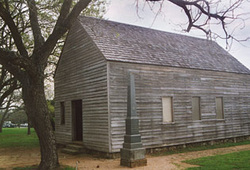
West of Navasota on 105 seven miles takes us to Washington on the Brazos. It was here, for seventeen days in March 1836 that delegates hammered out a declaration of independence and a constitution birthing the second Republic of Texas. Also it was here in 1845 that Texas prepared the way for statehood.
Montgomery and Grimes Prairie
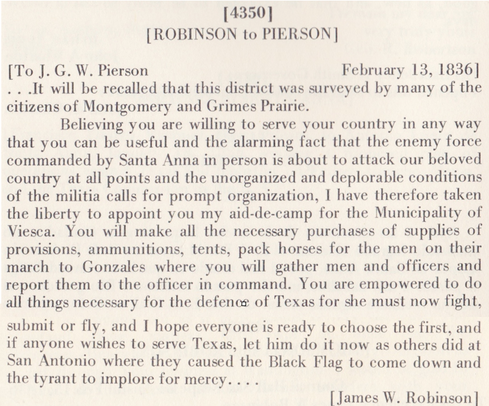
Back to Navasota and east on 105 for about fifteen miles brings us to what were once two neighboring communities. The west was Grimes Prairie, home of Jesse Grimes. Among his credentials, Jesse Grimes was a signer of the Texas Declaration of Independence, the first chief justice of Montgomery County, a member of the legislature of both the republic and the state of Texas. In the latter, he rose to president pro tempore. Just to the east of Grimes Prairie was once Montgomery Prairie, western anchor for the original Montgomery Clan of Montgomery County which included J.G. W. Pierson, de facto leader of Robertson Colony, and Andrew Montgomery, Texan in 1820 and a member of Houston’s Army at San Jacinto.
Montgomery
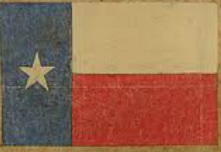
Eastward on 105 we come to the historic town of Montgomery, which first called for settlers in July 1837. In March 1838 it became the county seat of Montgomery County, yielding that position of power to Conroe in 1889. Meanwhile, Montgomery was the home of Charles Bellinger Stewart. A signer of the Texas Declaration of Independence, the state’s first secretary of state and member of the Texas legislature, Charles Stewart was another giant of Texas history. But he was also the designer of the official Lone Star Flag of Texas in 1839, so designated by the Texas Government by House Bill 1123 in 1997.
Conroe

We come next on Highway 105 to Conroe, Texas, county seat of the Montgomery County. Here are huge murals on the city square paying homage to figures and events of Texas history, most prominently to Charles Bellinger Stewart. Also here is a magnificent flag park featuring 13 significant flags of Texas history.
Cut and Shoot
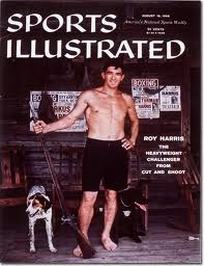
Continuing east on 105 brings us to Cut and Shoot, most famous for its number one citizen, Roy Harris. In 1958, Roy battled Floyd Patterson for the heavyweight boxing title of the world. Though Roy lost by a TKO in the twelfth round, he made Cut and Shoot so famous that it was necessary to build a post office. The same Roy Harris, on becoming an attorney, played a pivotal role in getting the city incorporated in 1969.
Deerwood

Still further to the east on 105 we come to Deerwood, a model community of some 350 Hispanics. While maintaining a unique feel for their native culture, over three generations the community is finding its place and engaging intercultural ties true to the Tejano experience. Since 2010, supporting this transition process has been a diverse team of professionals led currently by the Texas Latino Leadership Roundtable.
Huntsville

Back to Conroe we head north to Huntsville, and the homes of Sam Houston, leader at the Battle of San Jacinto and twice president of the second republic, governor and senator of the state. A magnificent statue of Houston greets the visitor on the side of I-45.
From Huntsville, it is north on 1-45 to again intersect Madisonville, completing the circle of the Cradle of Texas Road.
From Huntsville, it is north on 1-45 to again intersect Madisonville, completing the circle of the Cradle of Texas Road.
HTML Comment Box is loading comments...

